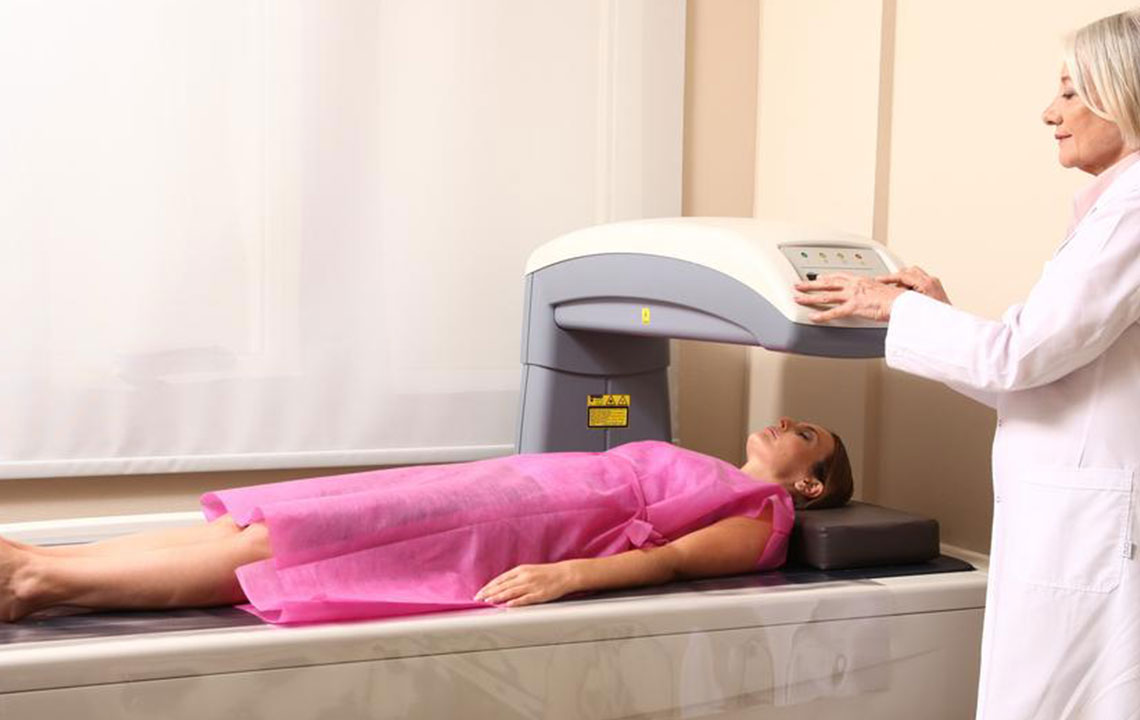Diagnosis Through Bone Density Test
Bone density test, also recognized as bone mass measurement test or calcium test, is an examination of your bones to detect if any of your bones have a chance of breakage and also to evaluate the density of your bones. The most recommended parts of your body to be examined for bone density are usually hip and spine because these bones are the most affected due to old age.

A dual energy X-ray absorptiometry machine is used for conducting bone density test. This machine will help the medical examiner to find out if your bones are healthy and strong. If you are a person who is older than 50 or if you have a family member who is older than 50, then this test is highly preferred. Also, if you have had any bone fracture in your life before, it is suggested that you get the bone density test done.
How does the bone density test help you?
A bone density test is required for multiple reasons, some of which are discussed below.
After a bone density test, you will be able to find out if you are suffering from osteoporosis or osteopenia and if you have any possibility of weak bones, breakage or calcium deficiency.
Referring to the results of the test, the pediatrician or the nutritionist will brief you about the treatment process. If your test results are not positive, then you should start nurturing and concentrating on your bones. Any physician or your doctor will be able to give you the right suggestions to protect or improve your bones only after you undergo the test.
The test will also help the physician to estimate the time period that is left before the condition worsens so that you can take necessary preventive measures against breakage.
Also, you can consult a dietician so that you can take necessary dietary supplements as a precaution or as a part of post-treatment process.
The bone density test will reveal if you have the possibility of facing any bone-related diseases in future and what exactly is lacking in your bone health.
The test will tell you the chances of you breaking your bone and how much pressure your bones can take.
Regular tests are recommended at constant and equal intervals so that it will help you understand if the health of your bones is improving or worsening or is stagnant. The physician will be able to change your medication and diet based on the changes and check if the prescriptions are working for you and how well your body is responding to them.
Types of bone density:
The main types of bone density are normal, osteoporosis, and osteopenia.
- Normal bone density is the condition where the bones are healthy enough.
- Osteoporosis is a condition where the bones are unhealthy, weak or broken.
- Osteopenia is a condition that falls in between normal and osteoporosis; the bones are weak, but not as much as osteoporosis.
Usually, your bones are in normal condition when you are 30 years old. Osteopenia occurs at the age of 50 if you do not give proper attention to your bone health. If you continue to ignore your bones’ wellbeing, then it may result in osteoporosis.
Types of one density test
DXA test – It is a process of using a specialized X-ray machine to detect the density of the bones of hip and back to find out if there is any breakage or weakness in the bones. The test takes about 15 minutes, and it is a painless process. The DXA machine uses minimum radiation, and therefore, it will not have any effect on your body. However, the test results may slightly vary, if it’s done in different clinics. Therefore, it is best to get the test done regularly at the same place so that the results will be more accurate and easy to compare.
Peripheral test – Also called for a screening test, it measures the density arms, wrists, heels, and fingers. There are three types of screening test known as a pDXA test, pQCT test, and QUS. This test is an optional or alternative test available in case central DXA is not available. The accuracy of the results obtained from this test may not be 100%, and therefore, it is best to go for central DXA as a priority.
So, if you are thinking of going ahead with bone density test, then do not forget to keep these important points handy. It is always best to consult your doctor before going for any bone density test to get a better understanding of the same.











